MARKET OVERVIEW
The Global Acoustic Insulation market will be at the forefront of defining the construction and manufacturing industries for years to come. The design and construction of buildings and industrial spaces will remain highly dependent on acoustic insulation solutions, designed to reduce or block sound transmission between spaces. As urbanization and industrialization grow, so will the need for technologies that promote quieter and more comfortable living and working spaces. The acoustic insulation materials market will be boosted by demand from both residential and commercial applications, all of which involve a range of products, including foam, fiberglass, cellulose, and mineral wool.
The construction Industry will remain the biggest consumer of acoustic insulation products. The future use of high-performance materials with acoustic design in residential and commercial buildings, such as controlling noise pollution by designing and applying appropriate building codes and regulations, will drive acoustic performance. Over the coming years, architects, builders, and developers will push to prioritize their work's acoustic performance while developing something innovative enough to meet the aesthetics and function they desire. Acoustic insulation will play a critical role in ensuring comfort among both occupants and workers by maintaining a silent indoor environment, whether for offices, apartments, or hotels.
Commercial and residential are not the only sectors with growth: the industrial sector of the Global Acoustic Insulation market will expand strongly. Industrial plants, machinery rooms, and manufacturing facilities typically produce intense levels of noise that have an impact on productivity among employees and their health. The acoustic insulation will be used, not only as a protective factor against the risk of hazardous sound levels to human ears but will also meet and satisfy noise-control regulations to eliminate noise pollution on the environment. With industries going more green and the use of sustainable options, there is now a need to be environmentally conscious and energy-friendly with the application of eco-friendly acoustic insulation with improved environmental requirements.
Transport infrastructure will also define the future of the Global Acoustic Insulation market. As cities expand, railways, highways, and airports will be the most important areas where noise reduction measures will be implemented. Acoustic insulation will be used to mitigate the disruptive effects of traffic, train, and air traffic noise, creating more comfortable living spaces for those living near transportation hubs. The need for materials like this is going to multiply, primarily due to highly developed urban and expansive transportation corridors within regions.
Technical advancements within material science are the basis on which new improved sound insulation materials shall be marketed and sold to market. Improved acoustic performance at the least reduced weight or reduction in size compared to material type. Furthermore, acoustic insulation products will be more versatile, not limited to only traditional construction and industrial applications. Moreover, as environmental awareness continues to gain momentum, products in the future will also be more sustainable, utilizing recycled and renewable material content while maintaining their high performance.
In such a scenario, with the requirement of noise control ever-increasing in several industries, the Global Acoustic Insulation market is expected to expand further. During the following years, this market will advance along with innovation in product line and awareness among the people concerning adverse effects of noise pollution. This market would be an important segment of construction, transportation, and industrial sectors for the generation of a more safe and quieter future.
Global Acoustic Insulation market is estimated to reach $23,949.70 Million by 2032; growing at a CAGR of 4.6% from 2025 to 2032.
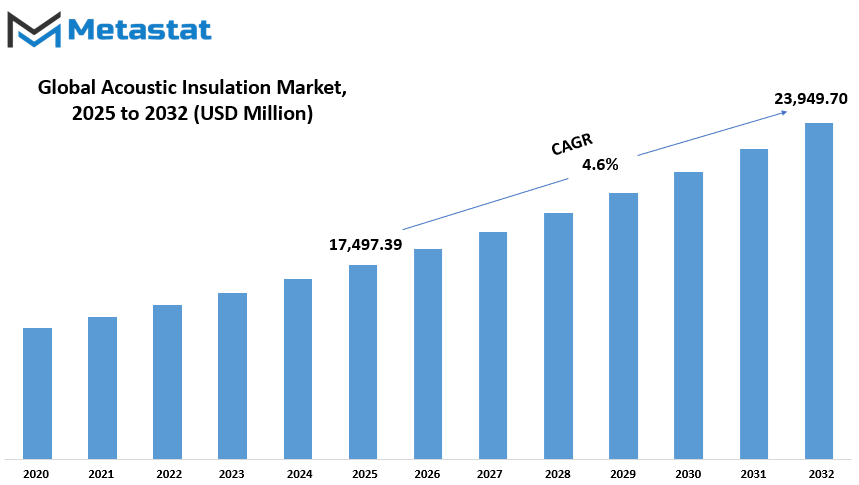
GROWTH FACTORS
The Global Acoustic Insulation market is steadily gathering momentum, based on a plethora of growth factors that point towards its importance in modern industries. Among the key factors propelling the growth of the market is the need for noise control, especially with respect to the construction sector. Owing to rampant urbanization and an ever-expanding population base, there has been a tremendous demand for quieter living and working places. Noise pollution has been associated with adverse effects on health and productivity for a long time, which makes acoustic insulation an important consideration in architectural planning and design.
Moreover, the strict regulations and standards to minimize noise pollution further emphasize the adoption of acoustic insulation solutions across different industries. But despite its advantages, there are certain challenges that might limit the growth of the market. High initial installation costs are still a major obstacle, especially for smaller-scale projects or regions with limited budgets. Moreover, a lack of general awareness about the benefits of acoustic insulation often leads to hesitation in adopting such solutions. The key to overcoming these obstacles will be educating stakeholders about the long-term benefits, such as improved quality of life and increased property value.
On a brighter note, there are opportunities on the side of an increase in sustainable and environmentally-friendly insulation material usage. Climate change concerns and issues relating to sustainability increasingly contribute to this new shift towards the use of green industries. From such concerns, producers now consider materials that may also control noise and at the same time reduce any impact on the environment. With worldwide efforts to create less carbon intensive developments, there is a move towards acoustic insulation. The long-term potential is enormous, both in terms of innovation and future expansion.
Advanced technological integration, especially smart materials, and energy-effective designs could very easily redefine the levels of acoustic insulation. With societies now giving priority to well-being and sustainability, the research and development investment will lead to cutting-edge solutions to be designed and created in line with the needs that evolve.
Considering the growing awareness of noise control and the compliance with regulations as well as the rising demand for an environment-friendly material, the global acoustic insulation market will soon boom up.
The existing high cost factor and lack of awareness are the present barriers to the development of acoustic insulation. Still, opportunities are emerging as innovation picks up and ecological friendly practices come more into limelight. Addressing these barriers and capitalizing on emerging opportunities can make the industry play a vital role in creating quieter, healthier, and more sustainable environments worldwide.
MARKET SEGMENTATION
By Material Type
The Global Acoustic Insulation market is expected to experience significant growth in the coming years in relation to increasing requirements for soundproofing solutions across different industries. Sound has to be minimized or eliminated in order to create quieter spaces that are comfortable to work and live in. This market is developing with growing awareness of the problem of noise pollution and the demand for effective, energy-saving solutions in residential, commercial, and industrial applications.
The main growth factor for this market is the growing use of advanced materials that provide superior soundproofing with environmental standards. By material type, glass wool is a significant segment, with a market value that is expected to reach $5,854.95 million. It is widely used in construction and manufacturing industries for its thermal and acoustic properties, making it one of the most popular insulation solutions. Mineral wool is also being used for its fire-resistant and eco-friendly properties. Fiberglass is another important material, which is valued for its lightweight yet strong property, ensuring effective noise reduction without compromising structural integrity. Foam plastics, known for their versatility and excellent sound absorption qualities, are becoming increasingly common in automotive and consumer goods sectors. Other innovative materials are also being developed, which are broadening the scope of possibilities for noise reduction applications.
The construction industry will continue to remain one of the largest contributors in the Global Acoustic Insulation market. This is because people are becoming increasingly concerned with urbanization and infrastructure development, which also calls for quieter spaces for living and working. More importantly, strict regulations enforcing noise control and energy efficiency standards encourage these solutions not only in new constructions but also in renovations. Besides construction, the automotive sector is another area in which acoustic insulation is gaining grounds. Vehicle manufacturers are constantly trying to find new ways to enhance passenger comfort and reducing noise inside vehicles has been a priority.
Technological advancements will create room for newer, better, and more improved insulation materials with enhanced performance. As sustainability becomes the global focus, manufacturers are also investing in environmentally friendly products, which can change the landscape of the market. The thrust to create healthier and quieter environments will only drive the demand for effective acoustic insulation solutions. This will establish a world where Global Acoustic Insulation will be playing an active role in the formation of how to handle sound around us in daily life, blending functionality along with innovation to meet future needs.
By Application
The Global Acoustic Insulation market is growing steadily because industries and individuals are increasingly recognizing the need for soundproofing solutions in creating comfortable and efficient environments. Acoustic insulation is crucial to reduce noise transmission between spaces, whether residential, commercial, or industrial. It minimizes the impact of noise pollution, thus enhancing living standards, improving workplace productivity, and enhancing well-being. Its applications lie in walls, floors, doors, windows, and other structural elements. It stands as a highly versatile product to address the various needs of acoustics.
As far as the applications are concerned, the dominant focus is upon walls since barriers are of much importance against the transmission of sound. The urban regions are more critical in this sense, since closeness to traffic, construction, or any other noise source would hampers daily activities. Innovative materials and technologies are being developed to improve the sound-absorbing properties of walls, ensuring a quieter indoor experience. Floors also play a crucial role in managing impact noise, such as footsteps or vibrations, especially in multi-level buildings. Acoustic insulation for floors enhances comfort for occupants and minimizes disturbances between different floors in residential complexes, offices, and public buildings.
Sound-proofing techniques in doors and windows, or access and egress points through which sound also gains entry into buildings, has increasingly become part of the needed insulations of spaces. Double glazing glass panes along with insulated window and door walls will minimize all sound entering building premises from external spaces, and by their energy performance will also promote high energy efficiencies in homes and other offices in the public spaces. The market also caters to other main applications; namely, it produces acoustic insulation for ceilings, pipelines, and HVAC systems, where noise control is vital to achieving equilibrium.
Looking ahead, the Global Acoustic Insulation market will, without doubt, be shaped by advancement in sustainable materials and smart technologies. Eco-friendly and sustainable materials such as insulation will dominate due to the rising concern of sustainability in consumer markets as well as businesses. Additionally, the integration of adaptive smart acoustic systems changing to fluctuating sound levels could further change the market, providing bespoke solutions for unique needs. Growing urbanization and industrialization will continue to call for effective noise control solutions; thus, the demand will remain very high, driving innovation and expansion in this dynamic market. The Global Acoustic Insulation market, therefore, promises a long-run growth prospect, especially with the diversified applications and ongoing developments in this field.
By End-user Industry
Growth prospects for the global acoustic insulation market are bright because of the ever-increasing requirement for noise control in different sectors. Acoustic insulation is indispensable for the development of quieter and more comfortable space by reducing sound transmission. As the negative impacts of noise pollution on human health and productivity become more visible, the need for effective soundproofing will steadily increase. This increased emphasis on increasing living and working conditions is continually increasing the relevance of acoustic insulation in both domestic and industrial fields.
The major driving force for the global acoustic insulation market comes from building and construction industries. Because of the prevalence of urbanization and population, construction activities are gaining pace worldwide. Contemporary buildings are constructed to be environment friendly and more comfortable for the residents with the aim to minimize energy consumption and noise levels. Residential applications emphasize quiet ambiance for the dwellers, and commercial buildings need acoustic comfortability for the staff, clients, and visitors. Thus, advanced insulation materials are being used by the developers and architects to meet such demands and follow the regulatory and customer expectations.
Transportation sectors also contribute towards the growth of the acoustic insulation market. There is a need to develop effective noise-dampening systems for vehicles, such as cars, aeroplanes and even trains for the comfort of passengers and better experience after their journey. Because of the environmental benefits, electric vehicles gain popularity and place an emphasis on advanced insulation in reducing road, wind, and vibration noise in an automobile cabin. This shift toward electric mobility presents new opportunities for manufacturers to innovate and supply cutting-edge solutions tailored to the unique needs of this growing market.
The oil & gas and petrochemical industries also depend on acoustic insulation to ensure safe and efficient operations. The equipment in these industries produces high levels of noise, which may be harmful to the health of workers and cause disturbance to the nearby communities. With the incorporation of soundproofing measures, companies are not only complying with regulations but also providing a safer workplace for employees. Energy and utility facilities, such as power plants, also need insulation systems to handle high noise levels from machinery.
The industrial and OEM sectors also contribute to market growth as manufacturing facilities increasingly adopt acoustic insulation to minimize equipment noise and enhance worker productivity. Looking ahead, the global acoustic insulation market is expected to witness steady advancements, driven by innovations in materials and technologies that offer improved efficiency, sustainability, and cost-effectiveness. This evolution promises a quieter and more comfortable future for industries and consumers alike.
|
Forecast Period |
2025-2032 |
|
Market Size in 2025 |
$17,497.39 million |
|
Market Size by 2032 |
$23,949.70 Million |
|
Growth Rate from 2024 to 2031 |
4.6% |
|
Base Year |
2024 |
|
Regions Covered |
North America, Europe, Asia-Pacific, South America, Middle East & Africa |
REGIONAL ANALYSIS
Growth within the Global Acoustic Insulation market is gradually, with the contribution of advancements from construction, automobile, and industries in various areas. Regional variations are seen clearly in terms of growth and market opportunities, influenced by the heterogenous demands and development in North America, Europe, Asia-Pacific, South America, and the Middle East & Africa.
North America is one of the largest contributors to the global Acoustic Insulation market, with significant contributions from countries like the United States, Canada, and Mexico. The region focuses highly on energy efficiency and noise control in buildings, which makes acoustic insulation in demand. In addition, strict regulations related to noise pollution and energy conservation further boost market growth. Advances in building materials, as well as the rising practice of green construction, are also expected to make North America remain at the market's top.
The Acoustic Insulation market in Europe is backed up by major nations such as the United Kingdom, Germany, France, and Italy. Europe, being focused on the goal of sustainable development and environmental protection, encourages its sectors to increase the use of acoustic insulation. As the rate of urbanization increases, noise reduction in high-density populations has become an imperative issue. Furthermore, carbon emissions in Europe will also reduce because this region focuses on integration with technologies that ensure increased energy efficiency. The market will thus have an area that is highly potential and contributing to the expansion of the market.
India, China, Japan, South Korea, and the like are all parts of the region Asia-Pacific which is under high industrialization and urbanization. In addition to this, it experiences fast construction activity and has awakened public awareness toward noise pollution, thus allowing a strong possibility for growth in this market. The increasing middle-class population and increased investment in infrastructure projects fuel the growth further. Adoption of advanced insulation technologies is expected to pick up in residential and commercial sectors in the near future and, hence, is likely to boost growth in Asia-Pacific.
South America, with Brazil and Argentina, is slowly becoming an emerging market for acoustic insulation. Compared to other regions, this market is still at a nascent stage; however, rising awareness about noise control and energy-saving measures will unlock opportunities. Relatedly, in the Middle East & Africa region, the GCC nations, Egypt, and South Africa are growing towards increasing their construction industries, whereas increasing awareness regarding environmental issues is popularizing acoustic insulation solutions in these regions. In terms of the future of the Global Acoustic Insulation market, the regions are expected to continue concentrating on sustainable practices and strategies to reduce noise.
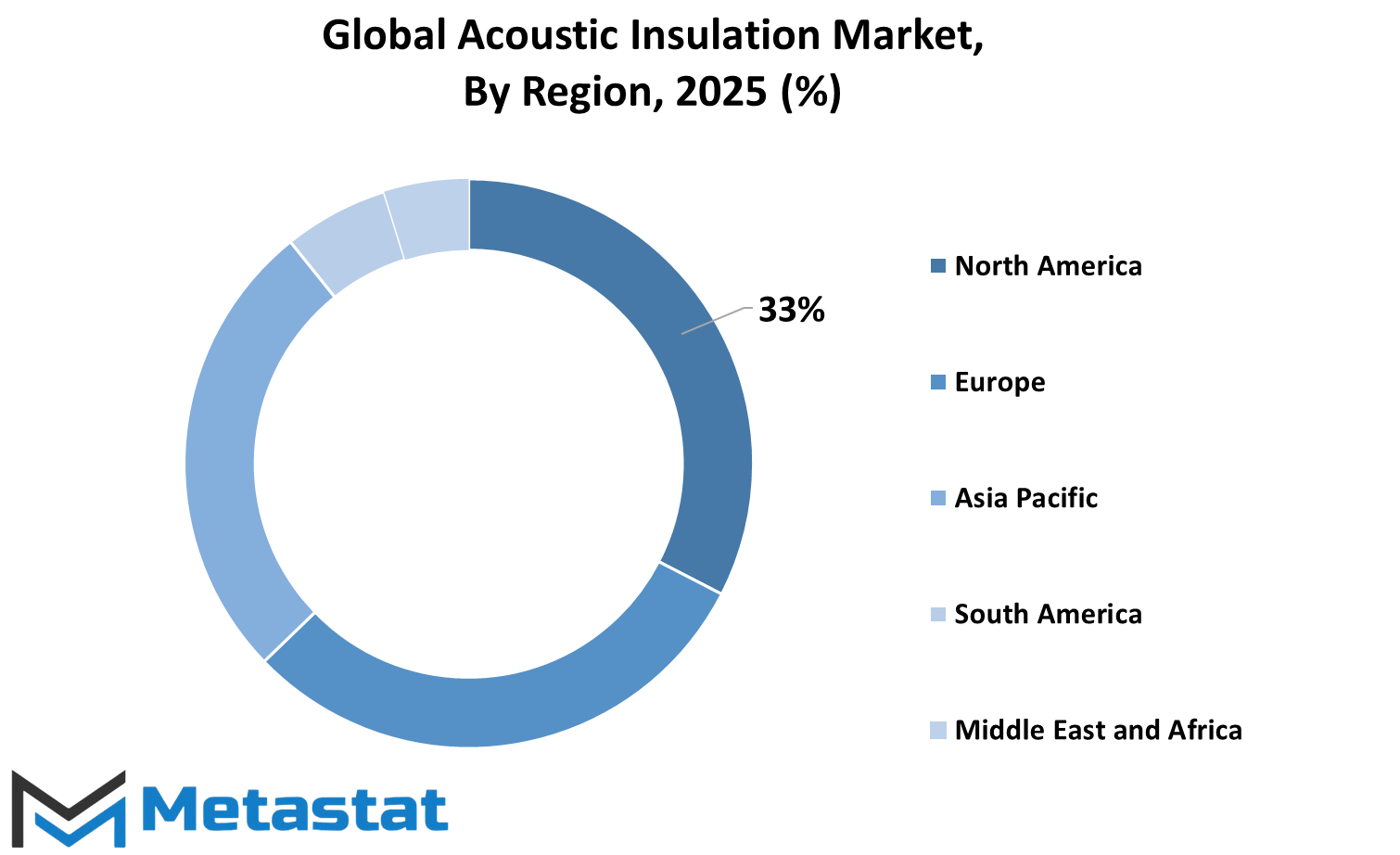
COMPETITIVE PLAYERS
The global acoustic insulation market has great potential, with increasing demands from various industries. As the world moves forward in urbanization and sustainability, the need for noise pollution control is becoming more significant. Acoustic insulation is pivotal in ensuring comfort, privacy, and environmental compliance, making it an essential component of modern construction, automotive manufacturing, and industrial processes. Strengthening this market's growth further would be the push towards energy efficiency and sustainable building solutions. In many cases, acoustic insulation often accompanies thermal insulation, resulting in dual benefits for the end-users.
Some of the competitive players help shape the global acoustic insulation market. Some of the well-known companies are Saint Gobain, Owens Corning, and Knauf Insulation, influencing innovation and providing high-quality solutions to meet the ever-increasing demand. Their research and development activities are aimed at creating materials that not only meet the noise reduction criteria but also support sustainability objectives. Mineral wool, fiberglass, and foam have become popular due to their superior performance and adaptability across various applications.
The global acoustic insulation market is expected to diversify further as technology advances and consumer preferences change. High-density housing, commercial space, and transportation structures require not only efficient noise management but also reduction in noise. There has been an increased focus by the automotive sector to push for cabin comfort. For instance, high-tech products aimed at cabin comfort are being developed by manufacturers. Lightweight and strong acoustic materials are predicted to dominate as the industry prioritizes efficiency without compromise on performance.
Key players, such as Armacell International, Rockwool International, and Johns Manville, are likely to maintain their competitive advantage through investments in sustainable manufacturing practices. Companies like 3M Company and USG Boral are also working towards reducing carbon footprints while enhancing the quality and durability of their offerings. Collaboration with government bodies in order to adhere to stringent regulations on noise pollution is becoming a cornerstone of market strategies.
The future of global acoustic insulation market is promising because of increased investment in green building initiatives and more adoption of advanced materials. As time goes by, the demand for quieter and energy-efficient environments is going to persist. Companies such as Soprema Group, Paroc Group, and URSA Insulation S.A., which are committed to meeting this demand, can drive the industry forward. With technological advance coupled with sustainability, acoustic insulation will continue to play an important role in modern times.
Acoustic Insulation Market Key Segments:
By Material Type
- Glass Wool
- Mineral Wool
- Fiberglass
- Foam Plastics
- Other
By Application
- Walls
- Floors
- Doors & Windows
- Other
By End-user Industry
- Building and Construction
- Transportation
- Oil & Gas and Petrochemical
- Energy and Utilities
- Industrial and OEM
Key Global Acoustic Insulation Industry Players
- Saint Gobain
- Owens Corning
- Knauf Insulation
- Armacell International
- Rockwool International
- Johns Manville
- 3M Company
- USG Boral
- Paroc Group
- Soprema Group
- URSA Insulation S.A.
- Acoustical Surfaces, Inc.
- K-FLEX USA
WHAT REPORT PROVIDES
- Full in-depth analysis of the parent Industry
- Important changes in market and its dynamics
- Segmentation details of the market
- Former, on-going, and projected market analysis in terms of volume and value
- Assessment of niche industry developments
- Market share analysis
- Key strategies of major players
- Emerging segments and regional growth potential



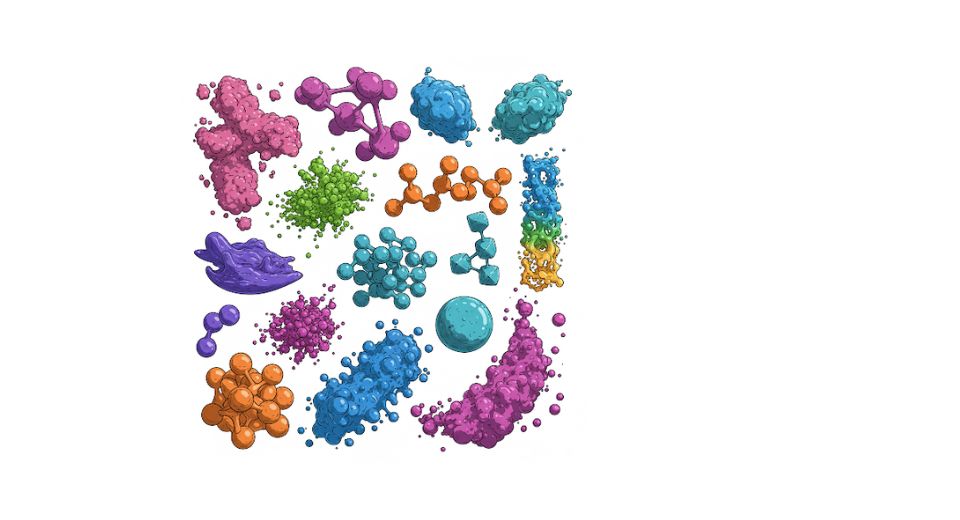
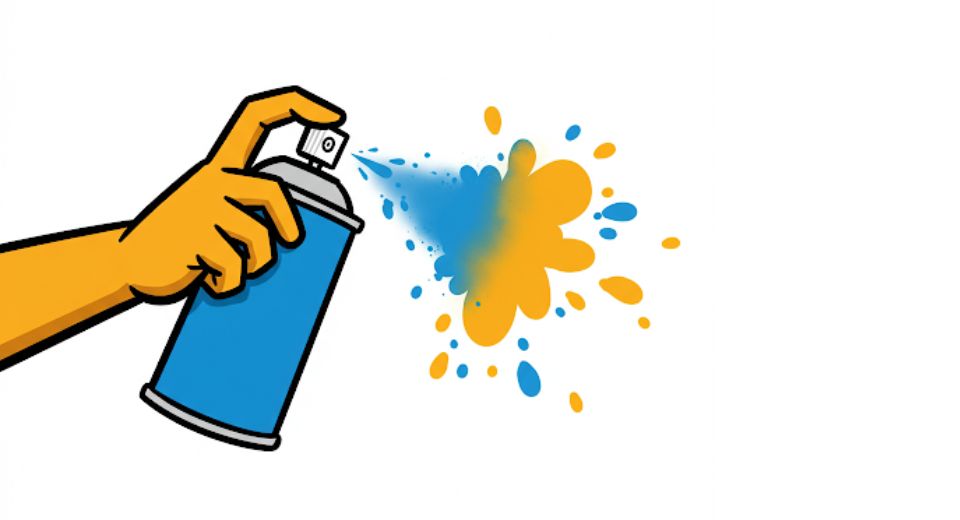
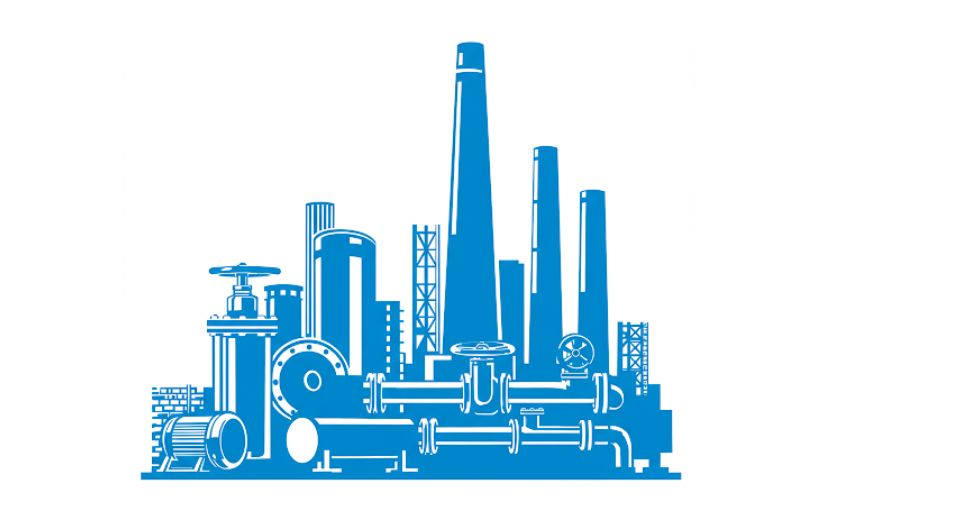
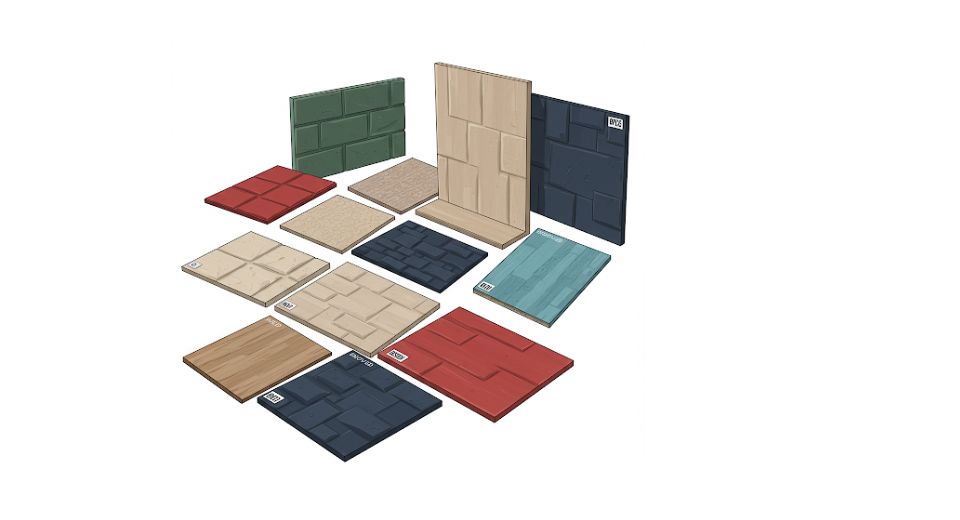

 US: +1 3023308252
US: +1 3023308252






